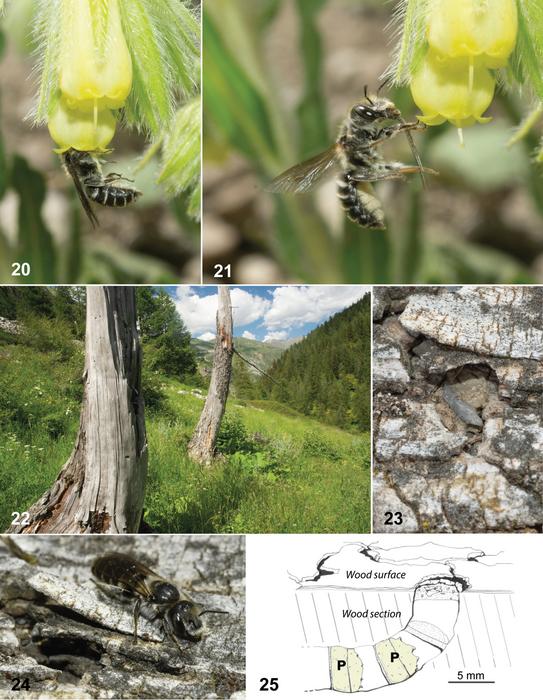A team of European researchers have discovered a new species of osmiine bee with an unusual geographic distribution.

Credit: Aubert et al.
A team of European researchers have discovered a new species of osmiine bee with an unusual geographic distribution.
Hoplitis onosmaevae is currently found exclusively in the Mercantour National Park in the French Alps and disparate mountainous regions in Turkey and Northern Iraq. The distance of more than 2000 km between these areas highlights a significant biogeographic disjunction.
Described in the open-access journal Alpine Entomology, the new bee species demonstrates unique ecological characteristics such as its distinct nesting behaviour in dead wood. Presumed to only harvest pollen from Onosma species, it has a long proboscis, which is likely an adaptation to collect nectar from the long-tubed flowers of this genus.
The strongly disjunct distribution of Hoplitis onosmaevae has important implications for conservation. The species likely has a very narrow ecological niche, making it highly susceptible to future changes in its habitats, for example due to changes in agricultural practices or to climate change.
“The consideration of the few known populations of this species in France is very important in the conservation field,” says lead author Matthieu Aubert, freelance entomologist and member of the Observatoire des Abeilles association.
“This study highlights the incredible diversity of wild bees and that we still have a lot to learn from our environment, even in western Europe,” he continues.
The researchers emphasise the need for detailed conservation plans in the southwestern Alps to ensure the survival of Hoplitis onosmaevae, considering its highly specialised ecological niche and consequently its vulnerability to habitat changes. Their proposals for initial conservation steps can be found in the full research paper.
Original source
Aubert M, Müller A, Praz C (2024) A new osmiine bee with a spectacular geographic disjunction: Hoplitis (Hoplitis) onosmaevae sp. nov. (Hymenoptera, Anthophila, Megachilidae). Alpine Entomology 8: 65-79. https://doi.org/10.3897/alpento.8.118039
Journal
Alpine Entomology
DOI
10.3897/alpento.8.118039
Article Title
A new osmiine bee with a spectacular geographic disjunction: Hoplitis (Hoplitis) onosmaevae sp. nov. (Hymenoptera, Anthophila, Megachilidae)
Article Publication Date
20-Mar-2024




